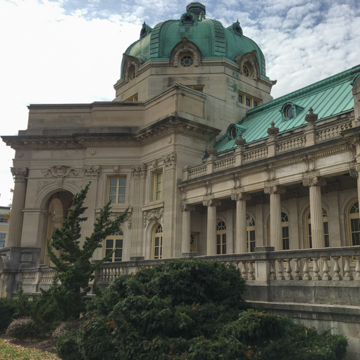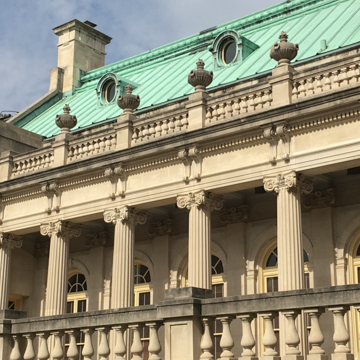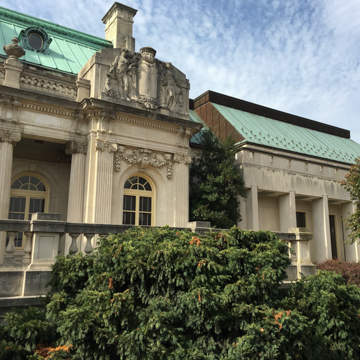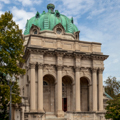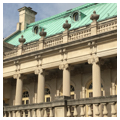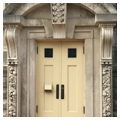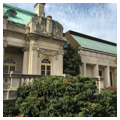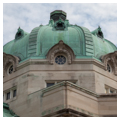Dominating the intersection of W. Piccadilly and N. Braddock, this public library was the result of a bequest to the city made by Judge John Handley of Scranton, Pennsylvania, who was enamored with the Winchester area. Handley also bequeathed money to the city for the construction of several public schools, one of which bears his name (FR18). Designed by a New York City architect, the library has a grand scale and is one of the finest examples of Beaux-Arts Classicism in Virginia. Sited at the intersection of two streets with its entrance at an angle to the corner, the building's form represents an open book--the central rotunda being the spine and the two right-angled wings the open pages. A flight of stairs leads to the triple-arched entrance portico with Corinthian columns, and a copper-covered dome with bull's-eye windows crowns the building. The library's multiple surfaces are enriched with cartouches, garlands, and figural sculpture. Constructed of limestone and granite and using then-modern fireproofing techniques, the library was a model for its time, technologically as well as architecturally. The main entrance and circulation desk are located on the first floor of the rotunda, which is illuminated by a stained glass dome. Original lighting fixtures, oak woodwork, wrought-iron staircases, dumbwaiters, and glass floors between the five levels of stacks are intact. The wings originally housed the reading rooms and offices but are now used for the periodical and reference rooms. Smithey and Boynton of Roanoke designed a rear addition that is a modern and subtle restatement of the building's wings in its similar proportions, rhythm, and materials, but without the classical details.
Handley Library also served as an unofficial museum when it opened in 1913, and many of its holdings of interest, some commissioned for the library and others given as gifts, are exhibited, including a 1929 night photograph of the library taken in celebration of the fiftieth anniversary of the invention of the lightbulb. When a copy of this photograph was sent to Thomas Edison, he wrote back that the library was one of the most beautiful buildings he had ever seen.


